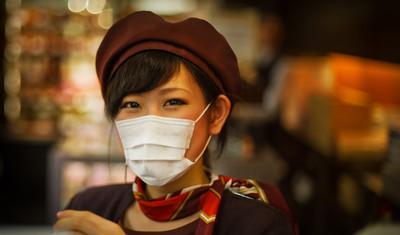The writing team at ACSH has spent a great deal of time discussing masks and COVID-19.
As Dr. Berezow has said, when the information changes we reconsider. While I have always felt that treating everyone as if they were infected, a kind of universal precaution, was not unreasonable, I have been reluctant to recommend the use of masks by non-first-responders, the civilians in this war because I was concerned that it would shift resources from first-responders and that it might give some people a false sense of security.
However, as a physician, I think the time has come to put those concerns aside because everything we do to reduce our risk and that of the people around us, is the best means we have of really supporting the frontline troops.
There are a number of factors that went into my thinking including discussions with physicians I know and whose views I respect.
There is data to suggest that social distancing at six feet may at times not be adequate. The tiny particles, the aerosols, produced by coughing, sneezing, and talking can travel further, some studies suggest up to 27 feet. My own readings on air pollution have taught me that particles can not only travel variable distances, but can linger in the atmosphere for some time. COVID-19 is not an exception.
While the numbers are not fully established, many infected individuals are asymptomatic or so early in their course that their symptoms are not yet present or ambiguous. These are sources of unintentional community spread.
As the caseload at our hospitals rises, health systems are adopting similar universal “precautions,” requiring everyone to wear masks. Let me pause, to make it clear that when I speak of masks I am not necessarily referring to N95s which are more protective than what we normally consider “surgical” masks. N95s are far more effective in filtering out viral particles, but we need to restrict their use, until more adequate supplies are available, to health professionals who are within an intimate distance with a patient’s airway and secretions.
I believe at this point, that the use of masks by everyone venturing out of doors would serve as an additional protective layer for them and the community. It is not a replacement for hand hygiene or physical distancing. A Cochrane meta-analysis found that “masks were the best performing intervention across populations, settings and threats,” and “limited evidence of the superior effectiveness of devices such as the N95 respirator over simple surgical masks.” As my colleague, Dr. Berezow recently summarized, the data on masks, especially in the face of COVID-19, is unknown.
Masks that we can make ourselves, are an additional means of protecting your lungs from the environment and more importantly, protecting the community from virus particles that you may unknowingly be sharing. It can be as simple as a bandana, or as nice as a hand sown mask.
A homemade mask or a surgical mask is not as protective as an N95, but it can serve two important purposes. It can reduce the R0, how many people are infected by another individual. If the mask reduces the viral particles being dispersed by the asymptomatic or the not-quite symptomatic by one or two persons, the R0 is reduced by a third or more. Second, it may reduce the amount of virus transmitted, and there is some evidence, although speculative, that a reduction in viral load is associated with a more benign course. There is little downside to wearing a mask when you venture out of your home, and there is the real possibility of an upside benefit, to you and your neighbors.
The American people are resourceful. In response to food shortages during World Wars I and II, citizens grew Liberty and then Victory Gardens. It is our turn to take action in support of our first-responders. We needn't disrupt the flow of masks and other personal protection equipment, we can -- like the liberty gardens of WWII -- take control of the situation that most affects us. The time has come for us to begin wearing masks when out in public and that is in addition to hand hygiene and physical distancing, not in replacement. And this should apply universally, to us all, from the streets of Manhattan to the parks in New Jersey, to the beaches in Florida.
Source: NY Times Opinion. "It’s time to make your own face mask." (This article has links to patterns for mask making.)




